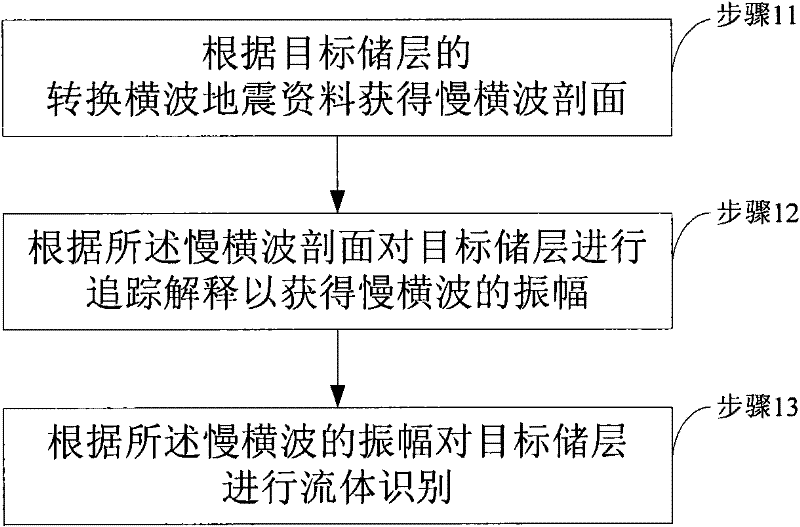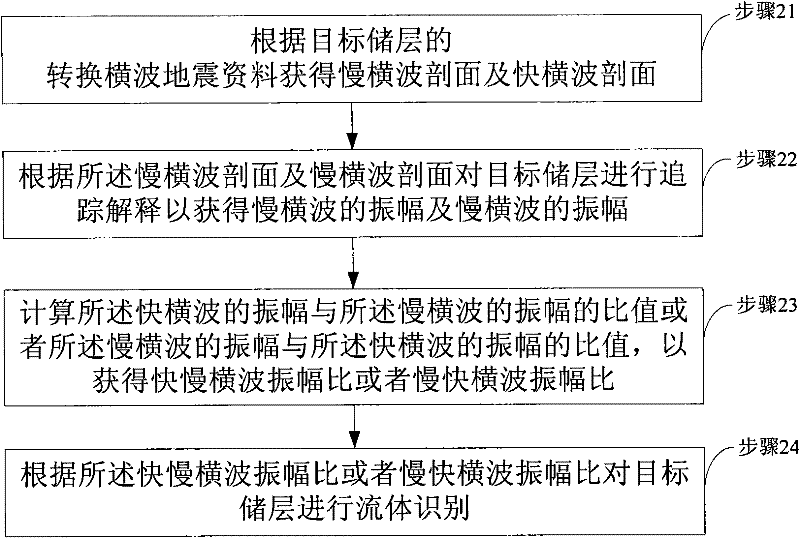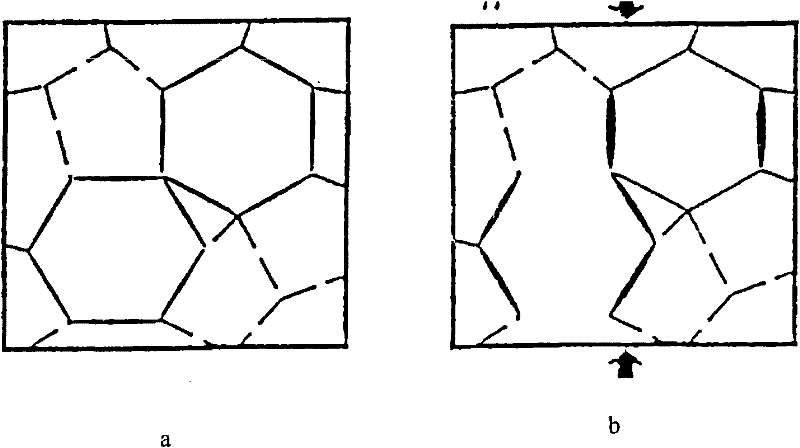Method and device for carrying out fluid identification by using converted transverse wave earthquake data
A technology for transforming shear wave and seismic data, applied in the field of fluid identification, can solve problems such as lack of research
- Summary
- Abstract
- Description
- Claims
- Application Information
AI Technical Summary
Problems solved by technology
Method used
Image
Examples
Embodiment 1
[0039] figure 1 It is a flow chart of a method for fluid identification using converted shear wave seismic data provided by Embodiment 1 of the present invention. Such as figure 1 As shown, the method includes:
[0040] Step 11, obtaining a slow shear wave profile according to the converted shear wave seismic data of the target reservoir;
[0041] Step 12, tracking and interpreting the target reservoir according to the slow shear wave profile to obtain the amplitude of the slow shear wave;
[0042] Step 13, performing fluid identification on the target reservoir according to the amplitude of the slow shear wave.
[0043] Among them, the fluid identification based on the amplitude of the slow shear wave is mainly analyzed based on the magnitude of all the obtained amplitudes. When the magnitude of the amplitude is above the middle value, it is an oil and gas area, otherwise it is a water injection area or a water flooded area.
Embodiment 2
[0045] figure 2 A flow chart of a method for fluid identification using converted shear wave seismic data provided in Embodiment 2 of the present invention, the method includes:
[0046] Step 21, obtaining a slow shear wave profile and a fast shear wave profile according to the converted shear wave seismic data of the target reservoir;
[0047] Step 22. Tracking and interpreting the target reservoir according to the slow shear wave profile and the fast shear wave profile to obtain the amplitude of the slow shear wave and the amplitude of the fast shear wave;
[0048] Step 23, calculating the ratio of the amplitude of the fast shear wave to the amplitude of the slow shear wave or the ratio of the amplitude of the slow shear wave to the amplitude of the fast shear wave to obtain the amplitude ratio of the fast and slow shear waves or the amplitude ratio of the slow and fast shear waves;
[0049] Step 24: Perform fluid identification in the target reservoir according to the amp...
Embodiment 3
[0064] Figure 8 Embodiment 3 of the present invention provides a device for fluid identification using converted shear wave seismic data. Such as Figure 8 As shown, the device includes:
[0065] a slow shear wave profile acquisition unit, configured to obtain a slow shear wave profile according to the converted shear wave seismic data of the target reservoir;
[0066] A slow shear wave amplitude acquisition unit, configured to track and interpret the target reservoir according to the slow shear wave profile to obtain the amplitude of the slow shear wave;
[0067] The fluid identification unit is configured to identify the fluid of the target reservoir according to the amplitude of the slow shear wave.
[0068] Wherein, the slow shear wave amplitude acquisition unit traces and interprets the target reservoir according to the slow shear wave profile to obtain the amplitude of the slow shear wave, and then the fluid identification unit performs fluid identification according...
PUM
 Login to View More
Login to View More Abstract
Description
Claims
Application Information
 Login to View More
Login to View More - R&D
- Intellectual Property
- Life Sciences
- Materials
- Tech Scout
- Unparalleled Data Quality
- Higher Quality Content
- 60% Fewer Hallucinations
Browse by: Latest US Patents, China's latest patents, Technical Efficacy Thesaurus, Application Domain, Technology Topic, Popular Technical Reports.
© 2025 PatSnap. All rights reserved.Legal|Privacy policy|Modern Slavery Act Transparency Statement|Sitemap|About US| Contact US: help@patsnap.com



